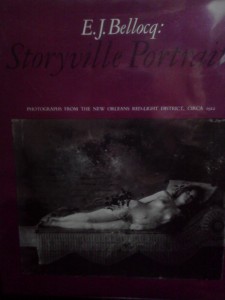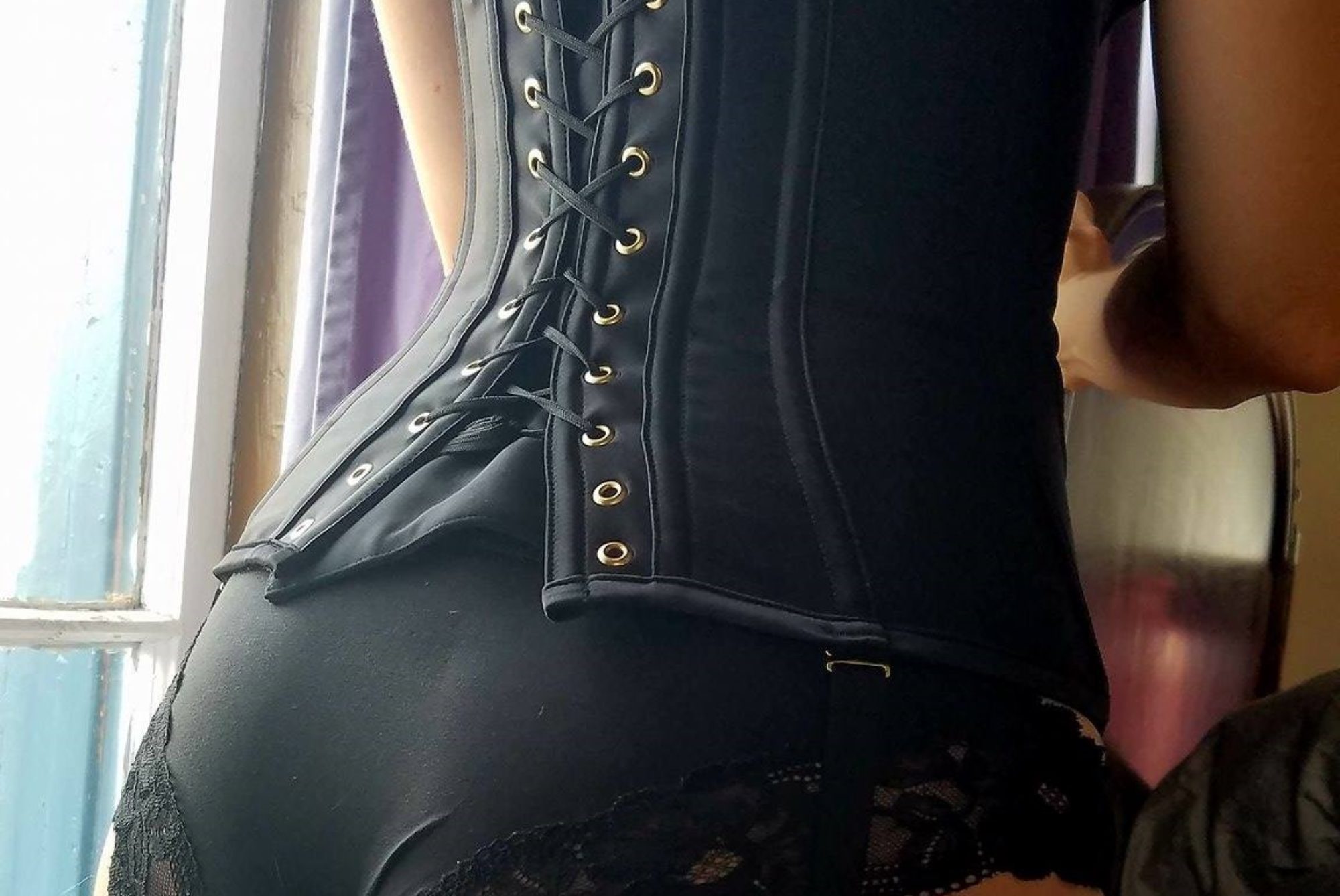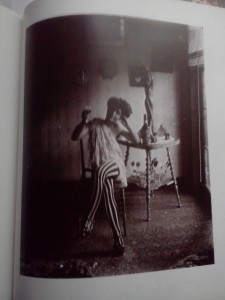Look what came in the mail today!!! It’s my new Bellocq book!

I’ve wanted to get my hands on this book (and that girl’s stockings!) for so long. I remember the first time I saw these images. I was taking a Sophomore level Louisiana History course in college–a course for which I had to memorize the names and locations of all 64 parishes in the state (oh, how I cursed that professor the night before THAT test…). Imagine my surprise when I walked into class one Monday morning, and instead of being met with another lecture on Huey P. Long or Earl K. Long or one of the other many Longs involved in Louisiana politics, I was treated to century-old photos featuring scantily clad ladies. Was I dreaming? Had I overslept through my alarm again? Nope. My lovely professor (I wasn’t cursing his name that day!) had prepared a lesson on Storyville, New Orleans’s own red light district, and the first in the United States. See–I knew my hometown had more to be proud of than our music, parties, and food!
I remember being so impressed with those photos back then. I didn’t even realize that there was a book of Bellocq’s portraits until later. I’d see the images here and there, on local-access TV shows or in advertisements for bars in the French Quarter. And I more or less forgot about them.
Enter the internet.
One day a couple years ago, I randomly thought about those pictures when I saw a pair of stockings with thick stripes. I bought the stockings immediately, even though they weren’t nearly as cool as the ones this girl is wearing in the photo. When I got home, I fired up the laptop and used the research skills I learned in graduate school to find that photo online (I am quite the Google ninja.). And when I found it, and I finally had Bellocq’s name, I hopped on over to Amazon to look for the book and…realized that it was out of print, and the only copies listed were going for well over $200. Wow. Not an expense I could justify, seeing as I was a graduate student studying the arts, and student life (especially grad student life) isn’t exactly conducive to a life of luxury.
Alas! A couple weeks ago, I randomly thought of checking up on the price of Bellocq’s book again. I found it for a pretty good starting price on Ebay, and set the alarm on my phone to alert me when the auction was closing. Those last few minutes were brutal–I was fighting it out with someone who, like me, really, really, REALLY wanted those pictures depicting legalized prostitution in New Orleans circa 1912, hahah. But in the end, I got the book for an amazing price. I still can’t get over it!
In the days of anticipation between the auction’s end and the book’s arrival, I read a lot of what others had to say about it. More often than not, I found their assessments patronizing. There’s one in particular that I’d like to share from a reviewer on Amazon, who “continue(s) to be intrigued by the sad faces, and what those expressions said about the tragic life that the ‘soiled doves’ lived in those days.”
This statement made me laugh out loud. This guy apparently hasn’t opened the book. Most of these women do not have “sad faces.” Now, I can’t speak for them–my own grandmother wasn’t even alive back then. But when I look at the pictures in this book, I see women laughing, women smiling, women completely at ease with themselves, their environment, and their photographer (and women enthralled with their dogs, much as I am with mine!). And I see other women who look rigid, uncomfortable, bored, or yes, sad. Look around you. Is everyone deliriously happy? If so, either you’re in an opium den, or you’re not very good at reading people.
These women are not a monolith–they were people, unique people, with their own problems and their own successes and their own hopes and dreams and desires and heartaches and fears and failures. It’s really tiring to hear people harp on about what women should or should not do with their bodies and the effects it surely has on us. Here’s a hint: we are people; we are individuals–not “just like” you, of course, but no one is “just like” anyone. Ultimately, we’re all doing what we can to make the most of the time we have. So quit with the pity. Who are you to stand in judgement of who a woman sleeps with and why? And who are you to superimpose your tired, ambiguous morals onto others?
I’m not going to pretend that the women of Storyville lived completely carefree lives free of hardship. But who did, in those days? And who does, in these days? The women who live on in these photographs were as varied as we are from each other today. And it’s frustrating to see that the attitudes our society had towards women and female sexuality one hundred years ago are persisting in 2012. This is not to say that you should turn a blind eye to what appears to be struggle or strife–If you really think someone needs your help, offer it. But if she says “Nah, I’m fine, thanks.”? Respect that, and reevaluate your own perceptions. We’re not all “soiled doves,” you know.
If you’re interested, you can find copies of E. J. Bellocq: Storyille Portraits on Amazon.


2 Replies to “E. J. Bellocq’s Storyville Portraits – Prostitutes in 1912 New Orleans”